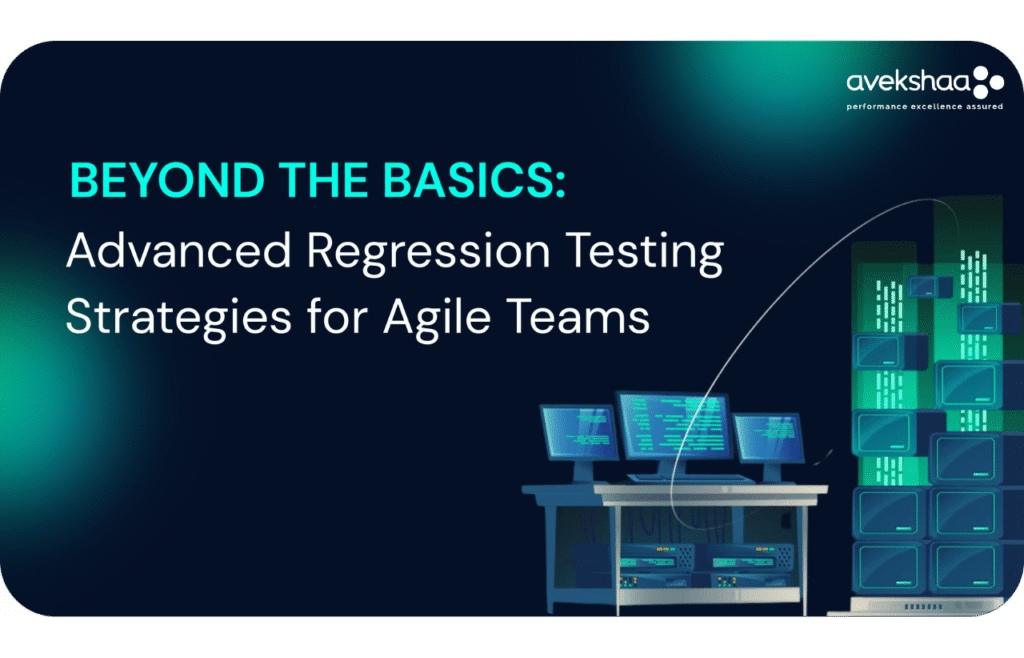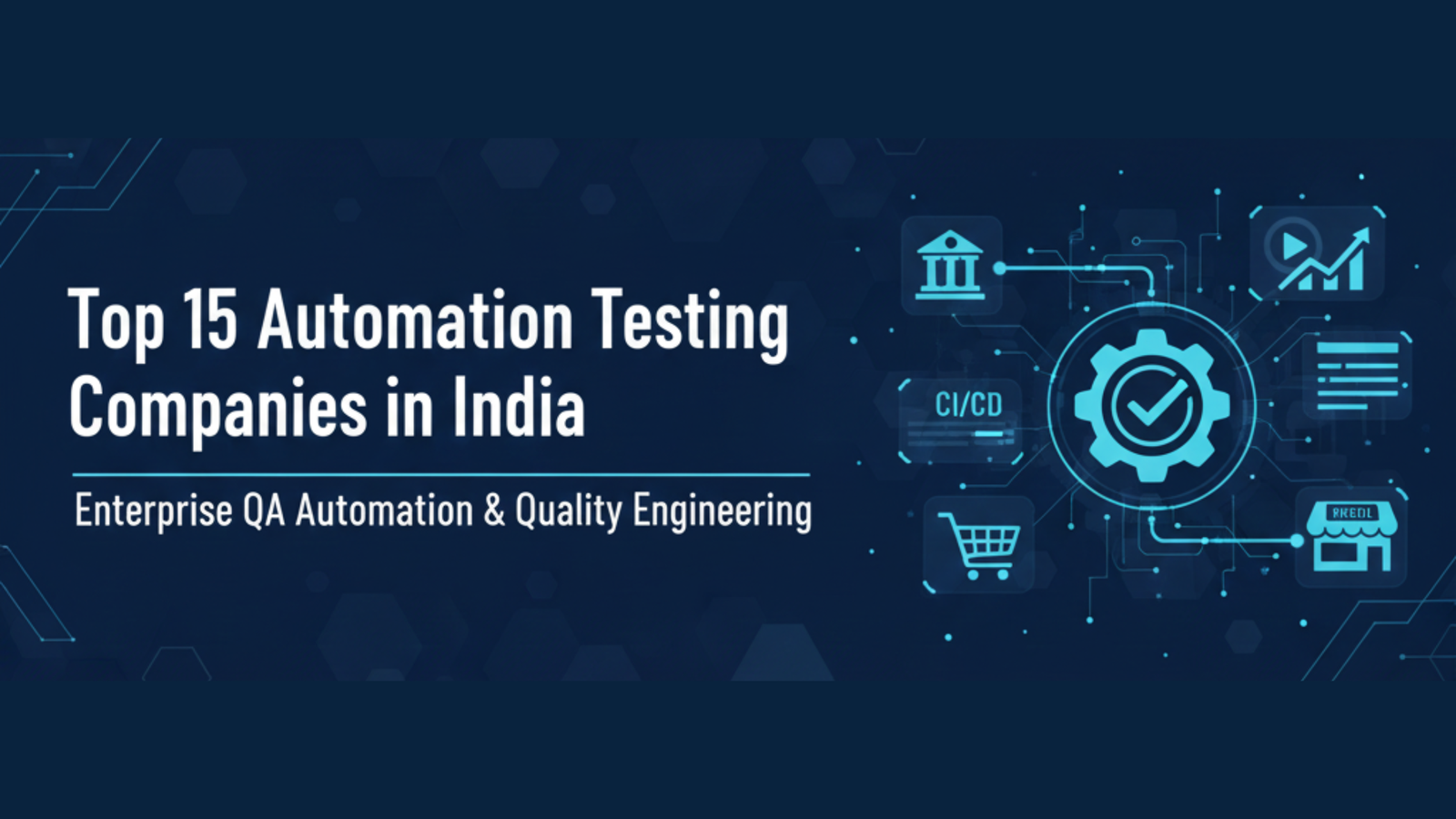Agile development moves at breakneck speed, and regression testing is the safety net that keeps quality intact through rapid changes. Simply re-running a handful of old tests is no longer sufficient. In fact, poor software quality due to inadequate testing cost businesses an estimated $2.41 trillion in 2022. For CTOs and tech decision-makers, this isn’t just an engineering concern—it’s a strategic business issue. To stay competitive, teams must go beyond the basics of regression testing and embrace advanced strategies that match the agility of modern development. This means rethinking how we design, execute, and scale regression tests to ensure that each new release doesn’t break existing functionality. In the sections below, we’ll explore cutting-edge regression testing techniques and tools (from AI-driven test selection to self-healing scripts), highlight common gaps in traditional practices, and illustrate how advanced approaches deliver real-world value like scalability, faster releases, better quality, and seamless DevOps integration.
The Gaps in Traditional Regression Testing Practices
Before diving into advanced strategies, it’s important to understand where traditional regression testing often falls short—especially in agile environments:
- Slow, Siloed Testing Cycles: In many teams, regression testing is a time-consuming phase at the end of a sprint. This can bottleneck releases and delay feedback. A suite that takes days to run is incompatible with the rapid iteration of Agile.
- Manual & Error-Prone Processes: Relying on manual test execution or ad-hoc scripting doesn’t scale. Human errors and oversights creep in, and coverage suffers. With over 60% of organizations now leveraging test automation to boost quality, purely manual regression puts your product at a competitive disadvantage.
- Incomplete Coverage & Missed Bugs: Traditional approaches may only test core happy paths. Edge cases, integration points, and non-functional aspects (like performance) might be ignored until a bug surfaces in production. This gap can lead to high defect leakage and costly fixes late in the cycle.
- Fragile Test Suites: It’s common to see test suites that frequently break due to minor UI changes or environment issues. Teams spend excessive time fixing tests (“flaky” tests) instead of writing new ones, undermining the benefit of regression testing altogether.
- Lack of CI/CD Integration: Perhaps most critically, basic regression tests often aren’t integrated into the continuous integration pipeline. When tests run only occasionally or outside the DevOps workflow, they fail to provide timely feedback. This misalignment with DevOps means bugs are caught later rather than sooner.
These shortcomings in conventional practices underscore why advanced regression testing strategies are necessary. Next, we’ll look at how modern approaches directly address these pain points.
Advanced Regression Testing Strategies for Agile Teams
Modern agile teams are adopting a range of advanced techniques to ensure regression testing keeps pace with rapid development. Below, we break down some key strategies and how they overcome the above gaps:
1. Continuous Regression Testing in CI/CD
A fundamental advanced strategy is integrating regression suites tightly with the CI/CD pipeline. Instead of treating regression as a separate phase, continuous testing runs automated tests on every code commit or build. Industry leaders emphasize that embedding tests into CI/CD fosters better Agile and DevOps practices, streamlining software delivery. For example, critical regression tests (smoke and sanity checks) can run on each pull request, with broader suites running nightly or on-demand. This ensures immediate feedback when a bug is introduced, aligning testing with the fast cadence of agile development. The result is fewer last-minute surprises and a steady, sustainable release velocity. As a CTO, enabling continuous regression testing means investing in automation infrastructure and culture: developers, QA, and operations all collaborate to make testing a non-negotiable part of the deployment pipeline.
2. AI-Driven Test Selection and Risk-Based Testing
Not every test needs to run all the time. Advanced teams use risk-based regression testing, often powered by AI/ML analytics, to prioritize the most relevant tests for a given change. AI-driven test platforms (for example, HeadSpin and Opkey) exemplify this approach. One guide notes that “AI-powered test automation platforms, like Opkey, can further enhance the efficiency of regression testing by reducing costs and effort while improving the timeliness of tests.” How does this work in practice? AI algorithms analyze code changes or past test results to predict which areas are most likely affected, then run only the necessary subset of tests. This drastically cuts down execution time while maintaining high confidence. A tool like Appsurify TestBrain, for instance, uses machine learning to identify and run just the impacted tests, reducing full suite execution times and keeping the feedback loop tight. The benefit is huge: faster pipelines and the ability to run regression suites continuously without overwhelming your infrastructure or engineers. In essence, AI-driven regression testing lets agile teams move at speed without sacrificing coverage.
3. Scriptless Automation and Codeless Tools
Traditional test automation often required coding skills (e.g., writing Selenium scripts), but a wave of no-code or low-code test automation tools is changing the game. These scriptless platforms allow test creation via drag-and-drop interfaces or plain English descriptions, enabling even non-developers to build and maintain regression tests. Modern regression tools increasingly adopt codeless frameworks to democratize testing, letting QA analysts or business users create automated tests with visual workflows. This not only expands who can contribute to testing (addressing resource gaps) but also accelerates test development. For example, Opkey’s platform provides a no-code test builder and a library of 30,000+ pre-built test cases, instantly boosting coverage for common scenarios. Similarly, scriptless solutions like Avo Assure tout one-click test generation and even video evidence for test results. The real-world value is speed and scalability: test cases can be created 3x faster than traditional scripting in some cases, as seen with certain no-code automation services. For agile teams with constant UI changes, these tools also often include self-healing capabilities.
Advanced tools now offer self-healing scripts and AI-assisted maintenance. When a test fails due to a minor UI change, the system can auto-diagnose and suggest a fix, as illustrated above. This minimizes flaky tests and maintenance effort, keeping your regression suite stable sprint after sprint. In fact, Opkey reports that its self-healing script technology enables users to fix broken tests with one click, reducing test maintenance efforts by over 80%.
4. Scalable and Parallel Testing (Cloud & DevOps Compatibility)
Another hallmark of advanced regression strategy is massive scalability. Agile teams can’t afford to run tests sequentially for hours. Instead, they leverage cloud infrastructure and containerization to run tests in parallel across dozens or hundreds of environments. Cloud-based testing platforms offer on-demand scalability, flexibility, and easier integration with CI pipelines—making them ideal for agile and DevOps teams. Services like HeadSpin provide a great example: HeadSpin’s AI-driven testing platform supports automated regression across web and mobile, with broad cross-browser and cross-OS coverage to ensure new code works everywhere. By running tests on real devices or virtual machines in parallel, you can compress what used to be an overnight test cycle into a matter of minutes. This kind of scalability directly translates to time savings and confidence to release more frequently. It also means your regression testing is comprehensive: you’re not just testing one browser or one configuration, but many, in the same time window. Modern tools often include centralized dashboards and alerts, so the whole team can monitor test results in real time. This level of scalability and transparency is crucial for DevOps compatibility – tests become a seamless part of the delivery pipeline, and issues can be detected and fixed early with minimal human intervention.
5. Beyond Functional Testing – Incorporating Quality Metrics and More
“Advanced” regression testing isn’t limited to re-running functional test cases. It also means keeping an eye on other dimensions of quality whenever code changes. For example, performance regression testing is increasingly folded into agile workflows. If a new build loads a page 2 seconds slower than before, an advanced regression system should catch that. HeadSpin’s platform illustrates this with its Regression Intelligence feature: it allows teams to set up custom performance KPIs and get alerts when metrics deviate between releases. By comparing metrics across builds and even across different device locations, HeadSpin’s data-driven approach brings deeper insights to regression testing. Agile teams also start to include security regression tests (ensuring no new vulnerability is introduced) and even visual regression tests (pixel-level checks for UI changes) as part of their suite. The overarching idea is that regression testing evolves from a narrow “did our features still work?” checklist to a broad quality gate. This comprehensive approach catches not only functional bugs but also performance bottlenecks or UX glitches early in the cycle, strengthening overall software quality assurance. As industry experts put it, HeadSpin stands out for its data-driven approach, using AI-driven regression intelligence to enable insightful comparisons across builds and locations, thereby enhancing software QA.
Bridging the Gap with Expertise and Intelligent Tools
It’s clear that adopting these advanced strategies requires the right tools and skills. CTOs should evaluate whether their current toolchain supports these capabilities – and whether their team has the bandwidth to implement them. In many cases, partnering with a specialist can accelerate the upgrade of your regression testing strategy. For instance, Avekshaa Technologies (a leader in QA and performance engineering) is recognized for providing cutting-edge, AI-powered testing solutions tailored to various industry needs. Their focus on advanced, integrated testing (covering everything from APIs to cloud apps) means they can help organizations achieve better efficiency and reliability through modular, reusable testing components. Engaging experts or leveraging industry-leading platforms (like HeadSpin’s and Opkey’s offerings) can fill gaps in your in-house capabilities – whether it’s implementing an AI-driven test selection system or setting up a scalable cloud test environment. The goal is to bridge the gap between where your regression process is today and what modern agile delivery demands.
Real-World Value: Scalability, Speed, Quality, DevOps Alignment
Advanced regression testing isn’t just about using fancy tools – it delivers tangible business value. Here are some key value-adds that CTOs and decision-makers should note:
- Scalability & Speed: By parallelizing tests and targeting only what matters, teams dramatically cut down regression cycle time. One retail enterprise, for example, reduced regression testing cycle time by 68% after adopting an AI-driven automation platform. Another tech company was able to ship code to production 15× per day with 70% fewer bugs by switching from slow, code-centric tests to a modern no-code testing service. Faster testing means faster releases – a direct competitive advantage.
- Improved Quality & Coverage: Advanced strategies ensure that even minor changes get vetted, reducing the risk of high-severity production bugs. Smarter test selection and comprehensive suites lead to more bugs caught pre-release. In practice, teams have seen defect counts drop significantly (as in the 70% bug reduction example) when robust regression testing is in place. Moreover, broad device/browser coverage and inclusion of performance checks mean higher product quality and better user experiences.
- Resource and Cost Savings: Automation and AI assistance free up human testers from repetitive drudgery. Over time, this cuts cost. By minimizing manual effort and reducing false failures, teams save thousands of hours. Self-healing tests, for instance, slash maintenance effort by 80%, allowing your QA engineers to focus on writing new tests or doing exploratory testing rather than constantly fixing scripts.
- DevOps & Continuous Delivery Compatibility: Perhaps most importantly for modern enterprises, advanced regression testing aligns with DevOps practices. It enables continuous delivery by making sure quality checks are automated, reliable, and fast. Cloud-based testing and integration with CI/CD mean your testing scales as your development scales. As your developers push daily (or hourly) code changes, your QA process can keep up without becoming a bottleneck. This harmony between development and testing results in a smoother pipeline and more confident releases.
To put it simply, advanced regression testing strategies translate into scalability (handle more tests and bigger systems), time savings (faster feedback loops), better quality assurance (fewer escaped defects), and seamless DevOps integration (testing as code, testing as a service).
A Quick Comparison: Traditional vs Advanced Regression Approaches
For a clearer picture, here’s a comparison of common traditional practices versus advanced strategies and their benefits for agile teams:
| Traditional Regression Practice | Advanced Strategy | Agile Team Benefit |
| Regression tests run at end of sprint only | Continuous testing integrated into CI/CD | Early bug detection; no release delays |
| Execute full test suite every time (slow) | Risk-based test selection (AI-driven focus) | Much faster cycles; targeted high-risk areas |
| Code-based scripts maintained by QA only | Codeless automation accessible to all | Broader team collaboration; faster test creation |
| Brittle tests break with minor changes | Self-healing tests & robust frameworks | Less maintenance overhead; stable pipelines |
| Limited environments (one browser/device) | Cloud-based parallel testing on many platforms | High coverage across OS/devices; scalability |
(The above table illustrates how moving beyond basic practices addresses pain points. For example, instead of a lengthy end-of-sprint testing crunch, teams shift to continuous regression, which catches issues earlier and keeps development flowing.)
Actionable Takeaways for CTOs
In conclusion, advanced regression testing is a must-have for Agile teams aiming to deliver high-quality software at speed. As a CTO or technology leader, here are some actionable steps to consider when upgrading your regression testing strategy:
- Assess Your Current Regression Process: Identify bottlenecks and gaps. Are your tests slowing down releases? Are critical areas under-tested? Use those insights to prioritize improvements.
- Integrate Testing into DevOps Pipelines: Make sure your regression tests run automatically as part of your CI/CD process. If you’re not doing this yet, start with automating the smoke tests on each build and expand from there.
- Leverage AI and Smart Tools: Explore tools that offer AI-driven testing, impact analysis, or test generation. These can drastically cut testing time and effort by focusing on what matters most. Pilot one on a small project to measure the ROI.
- Adopt Codeless & Maintainable Frameworks: If your team spends more time fixing tests than writing them, it’s time for an upgrade. Consider modern automation frameworks or platforms with self-healing capabilities to reduce maintenance burden. Empower your domain experts to create tests with codeless tools – this broadens test creation beyond just the QA engineers.
- Consider Expert Partnerships: If building these capabilities in-house is challenging, look at partnering with firms experienced in advanced testing. Providers like Avekshaa, known for AI-enhanced testing solutions, can bring in frameworks and expertise quickly so you don’t have to reinvent the wheel. This can jump-start your journey toward more sophisticated regression testing without derailing your development focus.
- Monitor Metrics and Iterate: Finally, treat your regression testing improvement as an ongoing process. Track key metrics – test cycle time, defect escape rate, test coverage, etc. – to gauge the impact of changes. Continuous improvement in testing will mirror your continuous improvement in development.
By moving beyond the basics and investing in these advanced regression testing strategies, you position your agile teams to deliver with confidence. The payoff is software that not only meets speed-to-market demands but also maintains the rock-solid reliability that your business and customers expect. In a world where downtime and bugs directly impact the bottom line, upgrading your regression testing approach is upgrading your overall product excellence. It’s a shift CTOs can lead today for stronger releases tomorrow.


